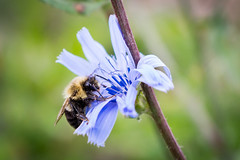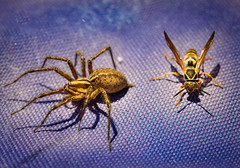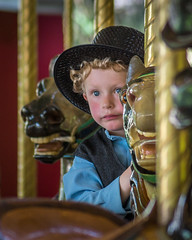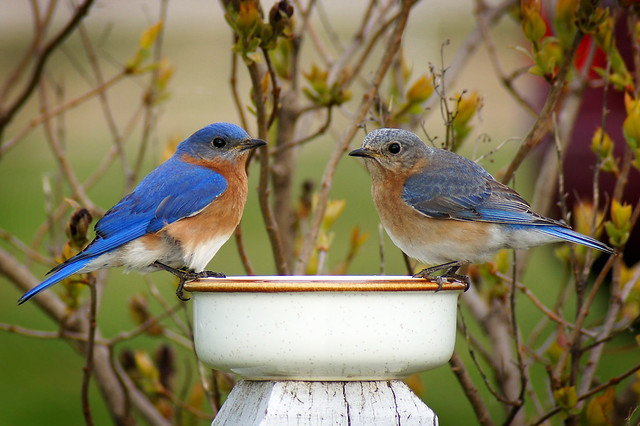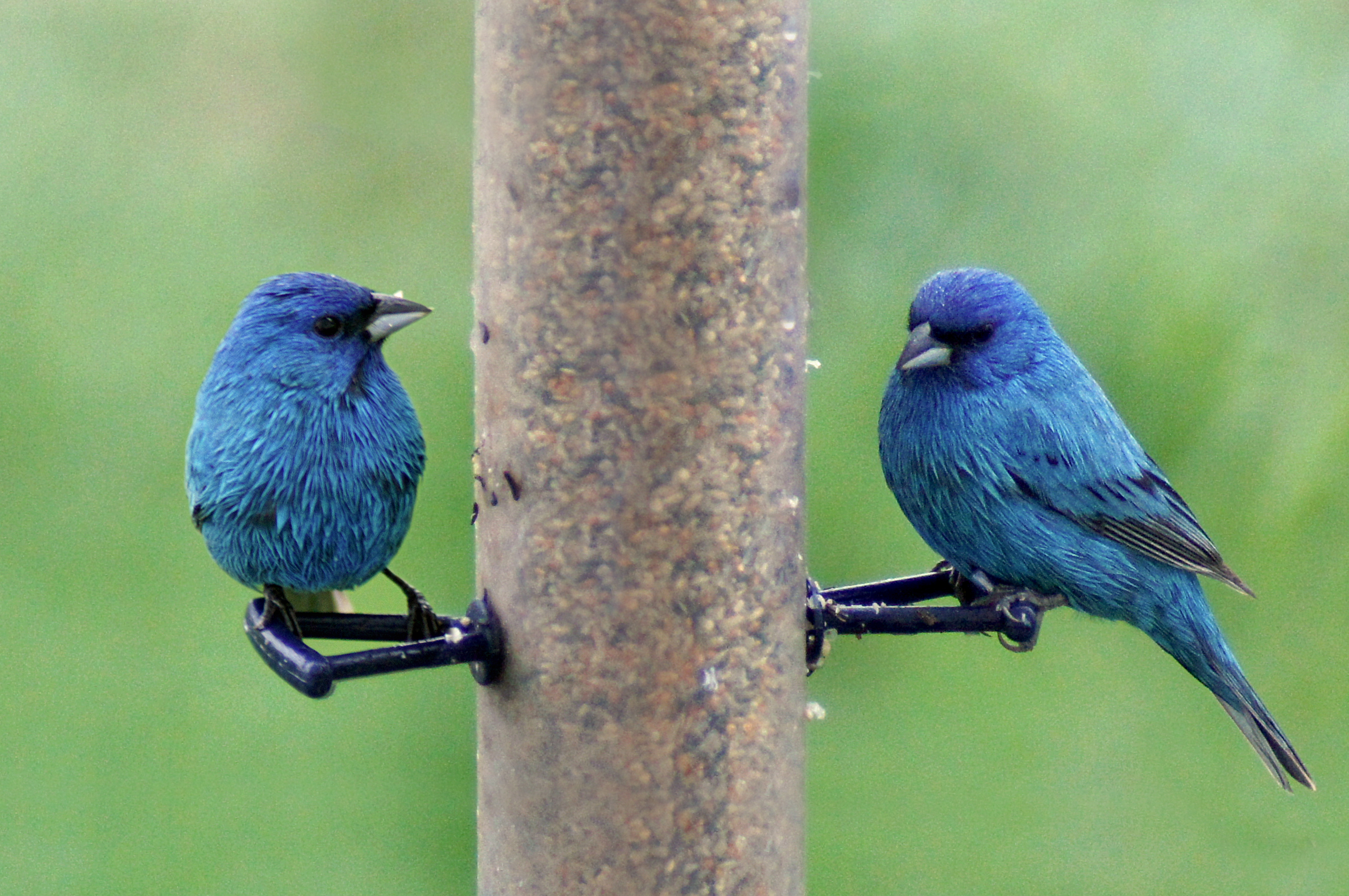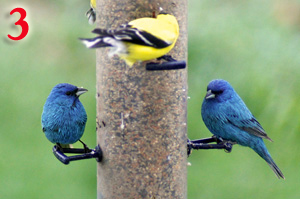Spring
Woodland Flora & Friend
Ladybugs all dressed in red
Strolling through the flowerbed.
If I were tiny just like you
I’d creep among the flowers too!
~Maria Fleming
This photo was taken in some woods not far from our home. It’s still early spring here and this small stand of early bloomers were a welcome sight. The ladybug was an added bonus. The surrounding trees, just starting to sprout leaves, provided a gentle filter for the afternoon sun.
To see a larger version of this image, simply click on it.
Just the Two of Us
This handsome pair of love birds – or…ummm…bluebirds – showed up early this spring. We have several bluebird houses around our yard and expect these (and more, hopefully) to raise a brood, as they have the last couple of years.
They are sitting on the edge of a stoneware bowl that I stock with a treat of mealworms for them each morning. It’s set on a post about three feet off the ground. As you can see from the lilac bush behind them, the leaves are just starting to sprout in our neck of the woods.
I took this photo remotely. I had my camera on a tripod about 20 feet away from the birds…while I watched from the window in our pantry (probably 40 feet in the opposite direction) and pressed my wireless remote shutter button when I saw the birds at the bowl.
Watch for more of this pair in coming days…and through the summer; now that I’ve got them trained to pose for me.
To see a larger view, click on the image.
Spring’s Baby Blues
I don’t know the name of these flowers, but they are the first sign of spring color in our yard each year. They are very tiny, standing only 1.5 to 2 inches tall, and grow in a clump smaller than the size of my outstretched hand. My wife is disappointed that, though they are faithful to pop up every year, they don’t seem to be spreading.
To create that soft look, I applied an effect known as the “Orton Effect.” This is an image I’ve had on my computer for more than a week. I’ve been preoccupied with so many other things, I’ve not been able to post it sooner.
If you like it, please feel free to share it.
To see a larger version, simply click on the photo.
Tiny Dancers
This spray of Forget Me Nots remind me of giddy, forest sprites dancing among the greenery.
With the dreary, winter weather we’ve been experiencing lately, I thought a spring-like image would be welcome. (No need to thank me.)
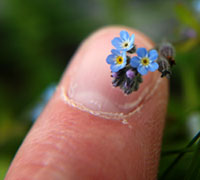 Forget Me Nots are some of my favorite flowers. However, they are so small, I have rarely captured an image of them that I really like. I really like this one.
Forget Me Nots are some of my favorite flowers. However, they are so small, I have rarely captured an image of them that I really like. I really like this one.
I put my index finger into the photo on the right to give you a reference for how tiny these little beauties are.
According to Wikipedia:
Myosotis (maɪ.əˈsoʊtɪs; from the Greek: “mouse’s ear”, after the leaf) is a genus of flowering plants in the family Boraginaceae that are commonly called Forget-me-nots. Its common name was calqued from the French, ne m’oubliez pas and first used in English in c. 1532.
To see a larger version of the main photo, just click on it.
Bluebird Trio
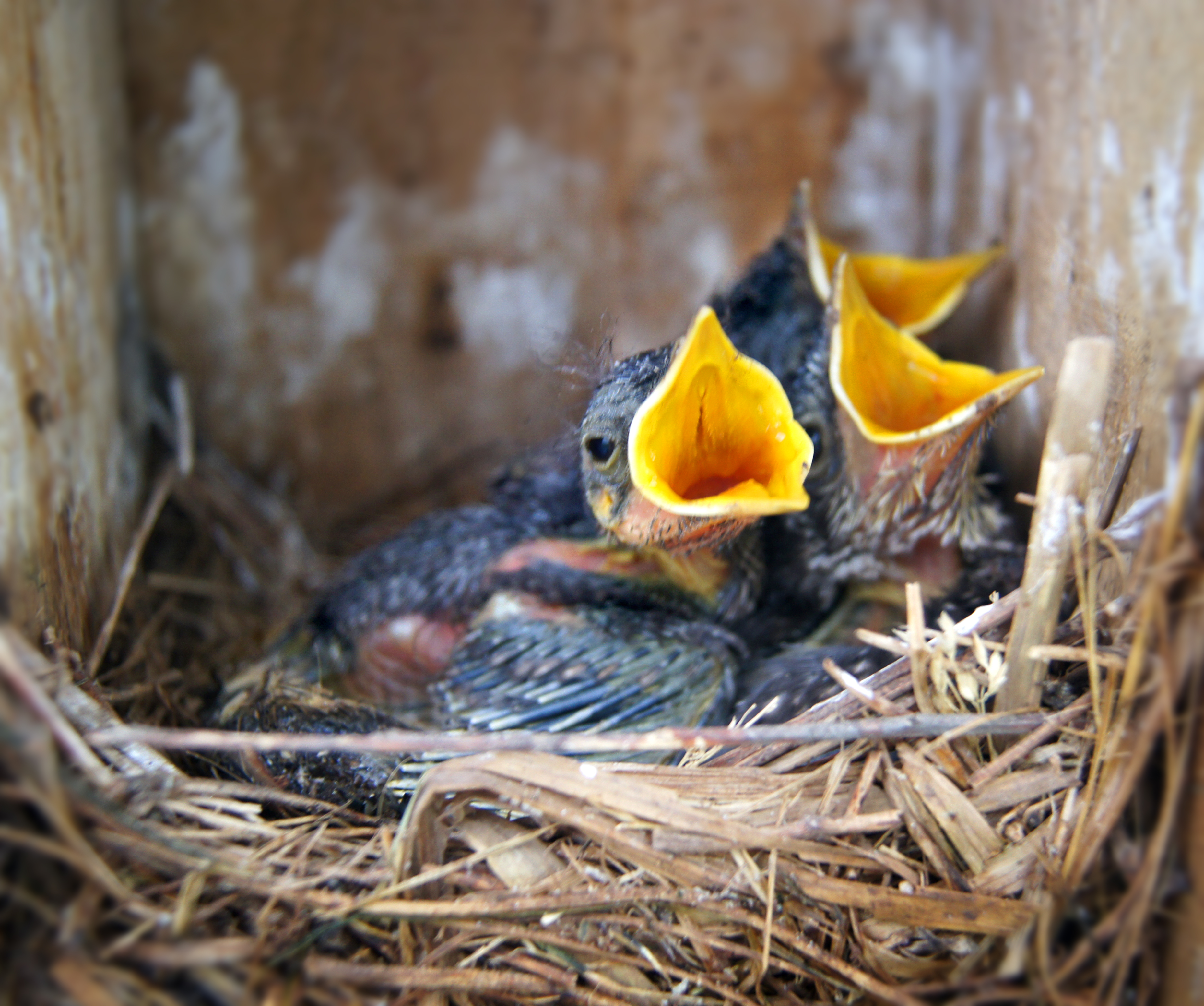
These blue birds look like their belting out a favorite song in three-part harmony. Actually, they are hoping someone will drop a worm or bug in their mouths. The wide open mouths are a response to a soft whistle from me. Even though I don’t sound anything like a blue bird, the whistle is close enough to make them think lunch is being served.
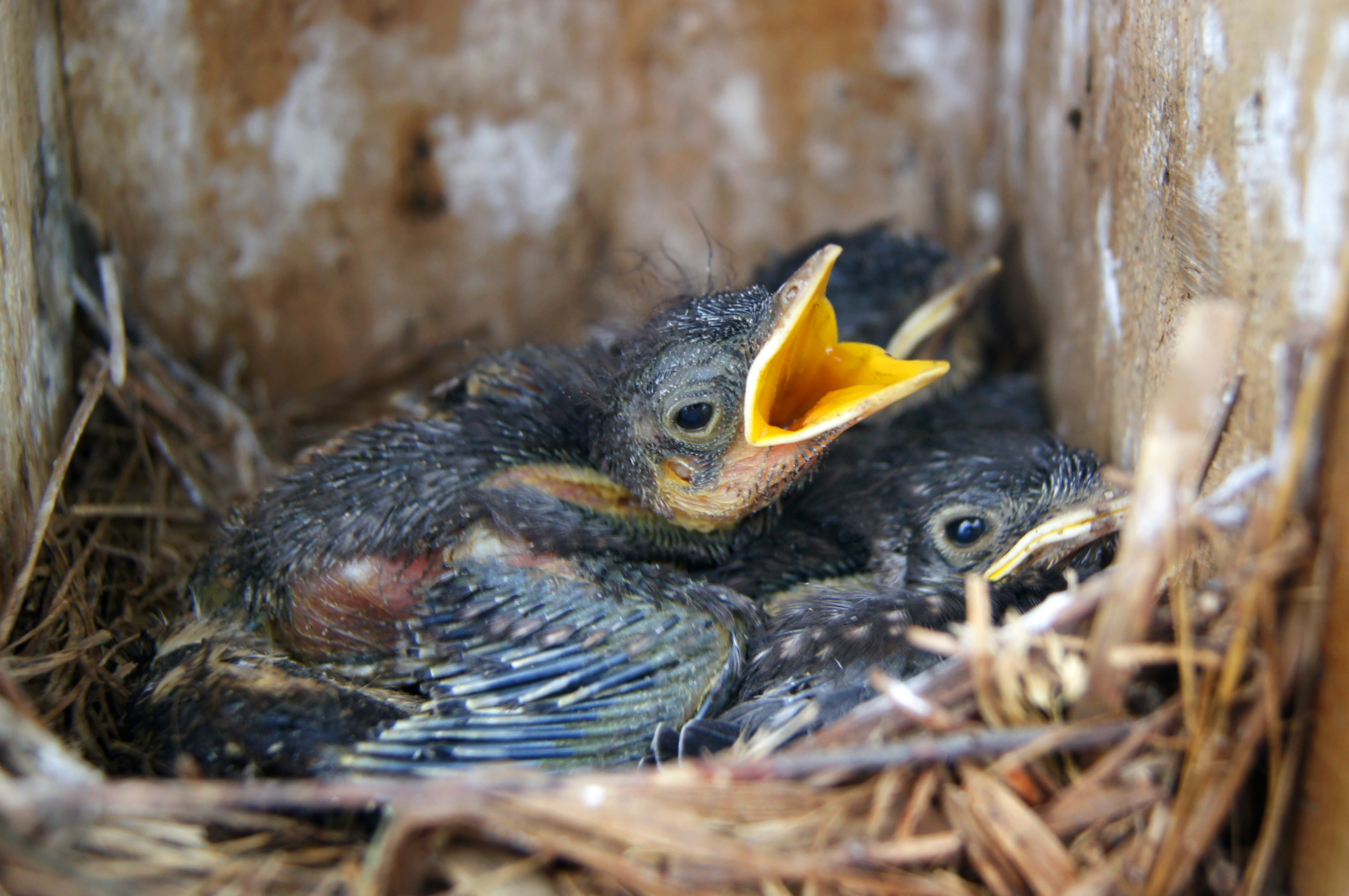 The smaller photo features the soloist of the family.
The smaller photo features the soloist of the family.
These blue birds are about a week old and progressing along nicely. However, not everyone in the brood has fared so well. Before the hatch I counted six eggs. It appears that four hatched and survived, but we found one of the four dead and removed it from the nest. (Surprised that the parents hadn’t removed it, since it had been dead for awhile and was smelling really bad.)
They have a couple of weeks to go before they are ready to take to the wing. It’s going to get very crowded in that little box by the time they fledge. There were five that survived to fledgling stage last year. That box was really crowded.
(Click on either image to see a larger version.)
All Puffed Up
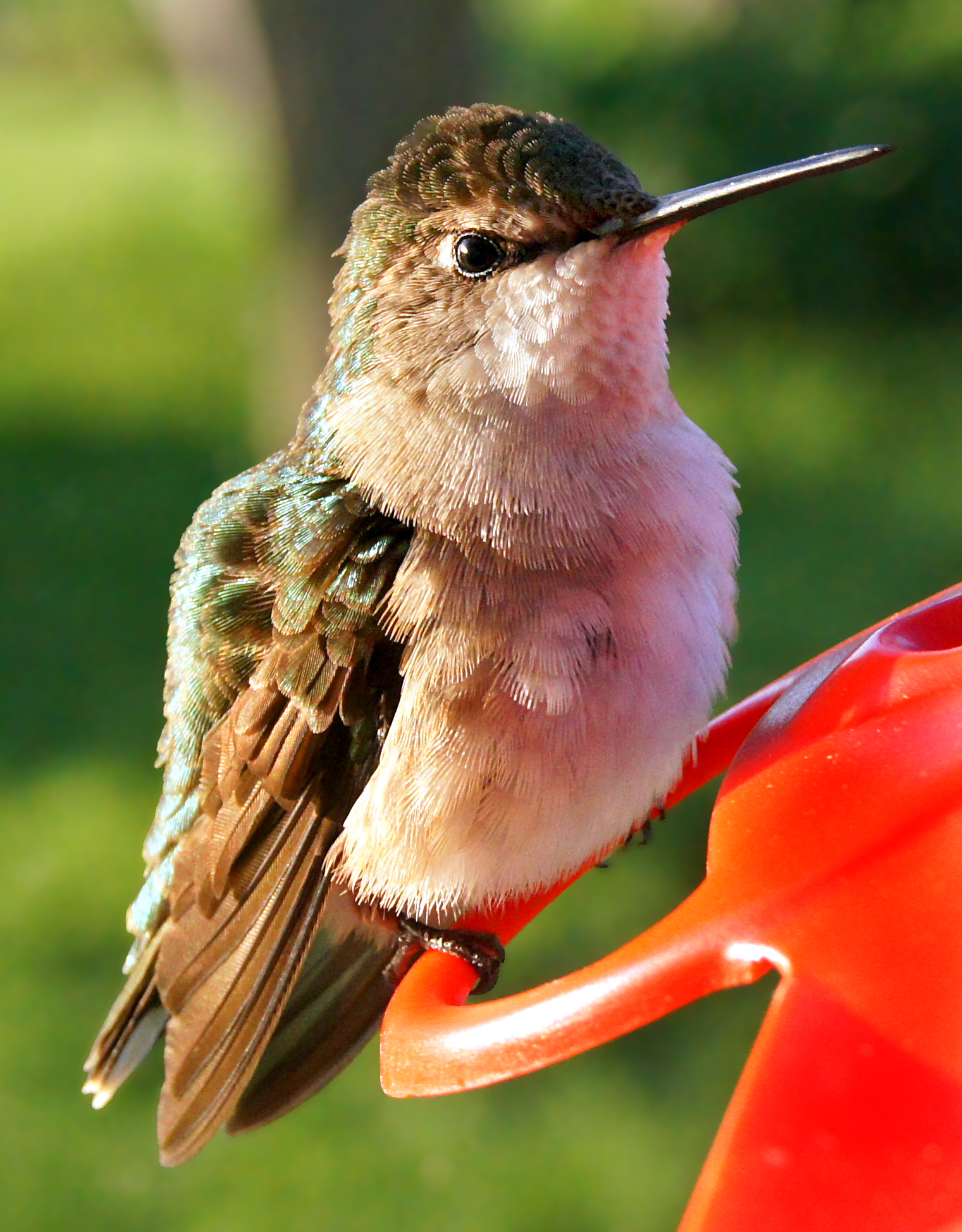
It was about 5:30 am on a cool Wisconsin spring morning – 37 degrees. This female ruby-throated hummingbird paused in the early morning sun and puffed up her feathers in an effort to stay warm. Of course, she was only there for a few moments before zipping away again.
(You may be able to see a larger version of this image by clicking on it.)
Intense Eater
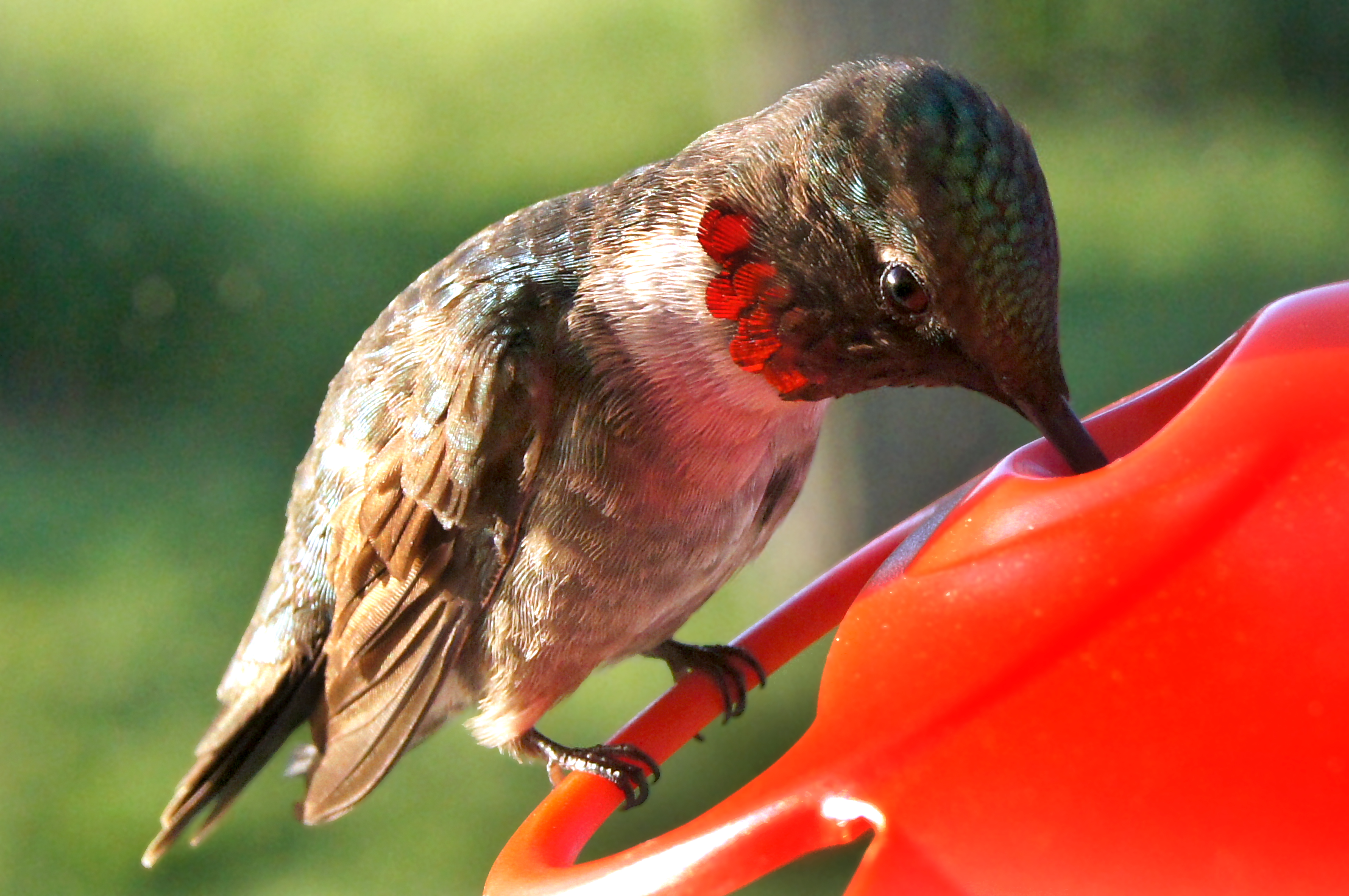
I had a few minutes before I had to shuffle off to work this morning. I decided to sit still by the window and try to grab a good hummingbird photo or two.
This is a male ruby-throated hummingbird intent on downing his breakfast. I love the way the low angle of the sun strikes and highlights the tiny feathers.
This is one of three good images I captured in this 15 minute setting. I’ll post the others soon, so check back.
Feel free to share this image with friends.
(Click the photo to view a larger version.)
The Blues in Double Time
On a dreary, rainy spring morning I was delighted to see four Indigo Buntings flitting around the bird feeders in my yard. I started snapping pictures, hoping to get some good images. I was never able to catch an image of the Indigos together. The birds in this shot are actually the same bird – brought together with the magic of Photoshop.
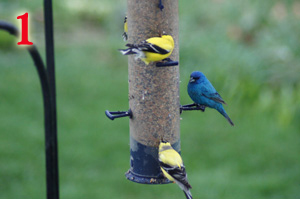 Most times I use Photoshop to tweak my photos – to crop, straighten, correct the color, etc. Some times I use it to create an entirely different image than what I started with. Here’s the basic process for this double Indigo image. Remember, all the Indigos in these images are the same bird, just captured in different locations.
Most times I use Photoshop to tweak my photos – to crop, straighten, correct the color, etc. Some times I use it to create an entirely different image than what I started with. Here’s the basic process for this double Indigo image. Remember, all the Indigos in these images are the same bird, just captured in different locations.
I started with photo 1. I straightened it, enlarged it and cropped it. I also did a little work to clean up some of the white spots of bird poop on the side of the feeder that you don’t notice on the small version but would be ugly when enlarged.
Time to add another Indigo Bunting to the image. I isolated the Indigo Bunting on his perch from photo 2 and copied and pasted it to photo 1. I had to scale the second bird to proper proportions and overlay it over the perch on the opposite side of the first bird. Then I cropped it to the image you see as photo 3.
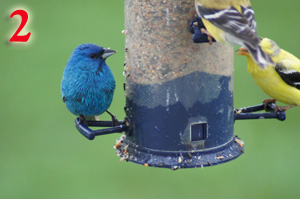
Looking at photo 3, I decided that the Goldfinches were a distraction, so I removed them by cloning parts of the feeder and surrounding background over them.
Things were looking pretty good, but I decided that the image was wider than I really wanted. To change it’s overall proportions I narrowed the feeder, bringing the birds closer together.
After tweaking the contrast and sharpness the project was complete. I hope you like it.
A few days later it dawned on me – I could have created an image with the feeder full of Indigo Buntings. Maybe I’ll work on that when I’m stuck in the house on a cold winter’s day, wishing I could be out photographing birds.
(Click on the main image for a larger view.)
Oriole

“I just flew in from Baltimore…and boy are my wings tired!”
We have a few orioles that show up this time of year. They like the oranges we put out. This guy still has a little orange stuck to his beak.
According to Wikipedia.org – – The Baltimore Oriole (Icterus galbula) is a small icterid blackbird that averages 18 cm long and weighs 34 g. This bird received its name from the fact that the male’s colors resemble those on the coat-of-arms of Lord Baltimore.
Adults have a pointed bill and white bars on the wings. The adult male is orange on the underparts, shoulder patch and rump. All of the rest of the male is black. The adult female is yellow-brown on the upper parts with darker wings, and dull orange on the breast and belly.
The Baltimore Oriole’s nest is a tightly woven pouch located on the end of a branch, hanging down on the underside.
Baltimore Orioles forage in trees and shrubs, also making short flights to catch insects. They mainly eat insects, berries and nectar, and are often seen sipping at hummingbird feeders. Oriole feeders contain essentially the same food as hummingbird feeders, but are designed for orioles, and are orange instead of red and have larger perches. Baltimore Orioles are also fond of halved oranges and grape jelly.
(Click the photo to see a larger version.)
Flying Circus
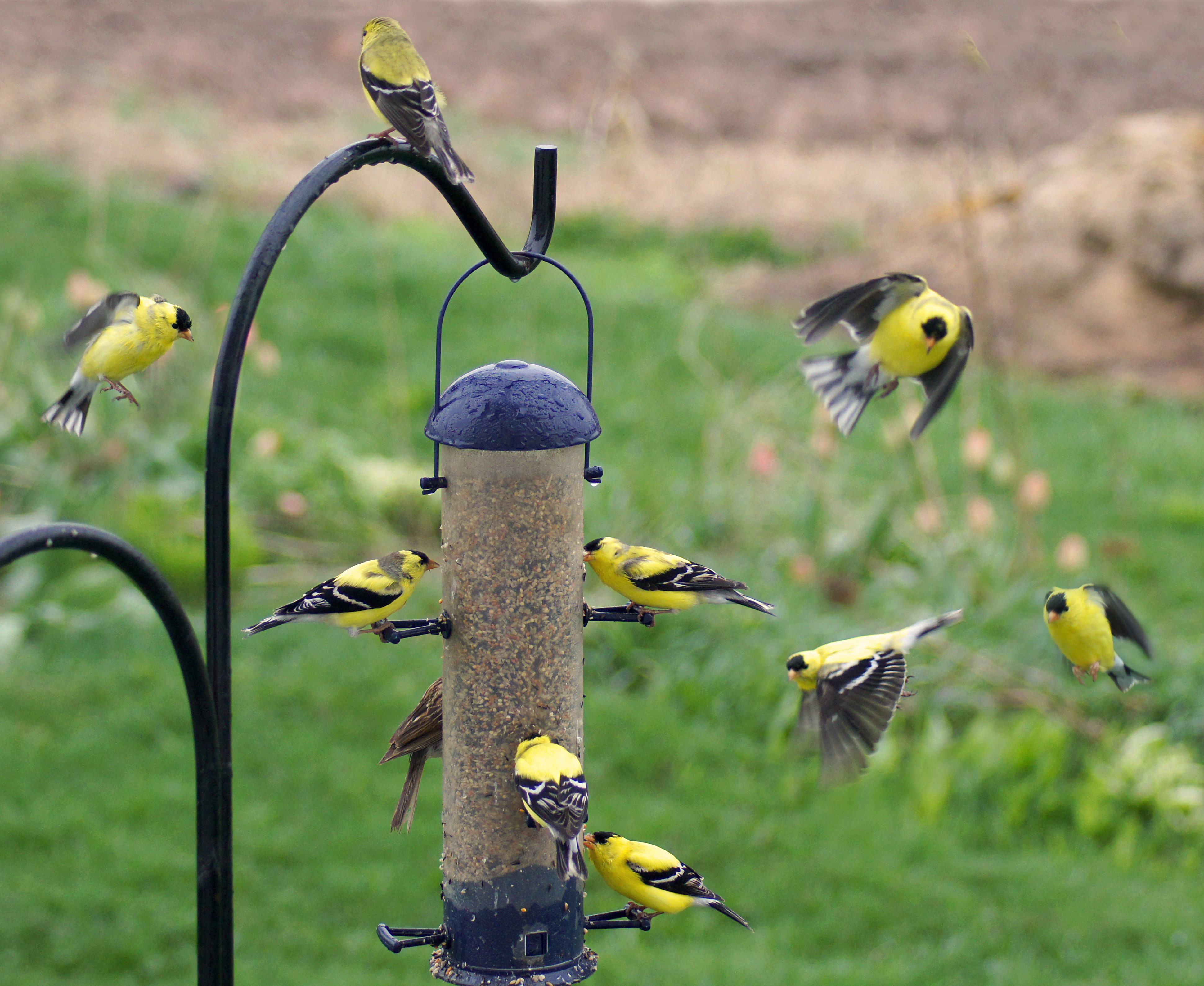 There are times when I look out the window of our rural home and think, “What a circus!” Birds are flying in every direction to take advantage of a free meal from one of our many feeders.
There are times when I look out the window of our rural home and think, “What a circus!” Birds are flying in every direction to take advantage of a free meal from one of our many feeders.
Of all the birds we see, the American Goldfinches are among the most active and consistent performers at our house. It can be quite entertaining to watch them zipping in and out; hither and yon.
When frozen by the camera, the Goldfinch’s quick, bouncy style of flight seems unnatural and awkward.
All of the birds in this photo are American Goldfinches – except the one Chipping Sparrow whose tail can bee seen as he perches on the back side of the feeder.
(Click the image for a larger version.)






